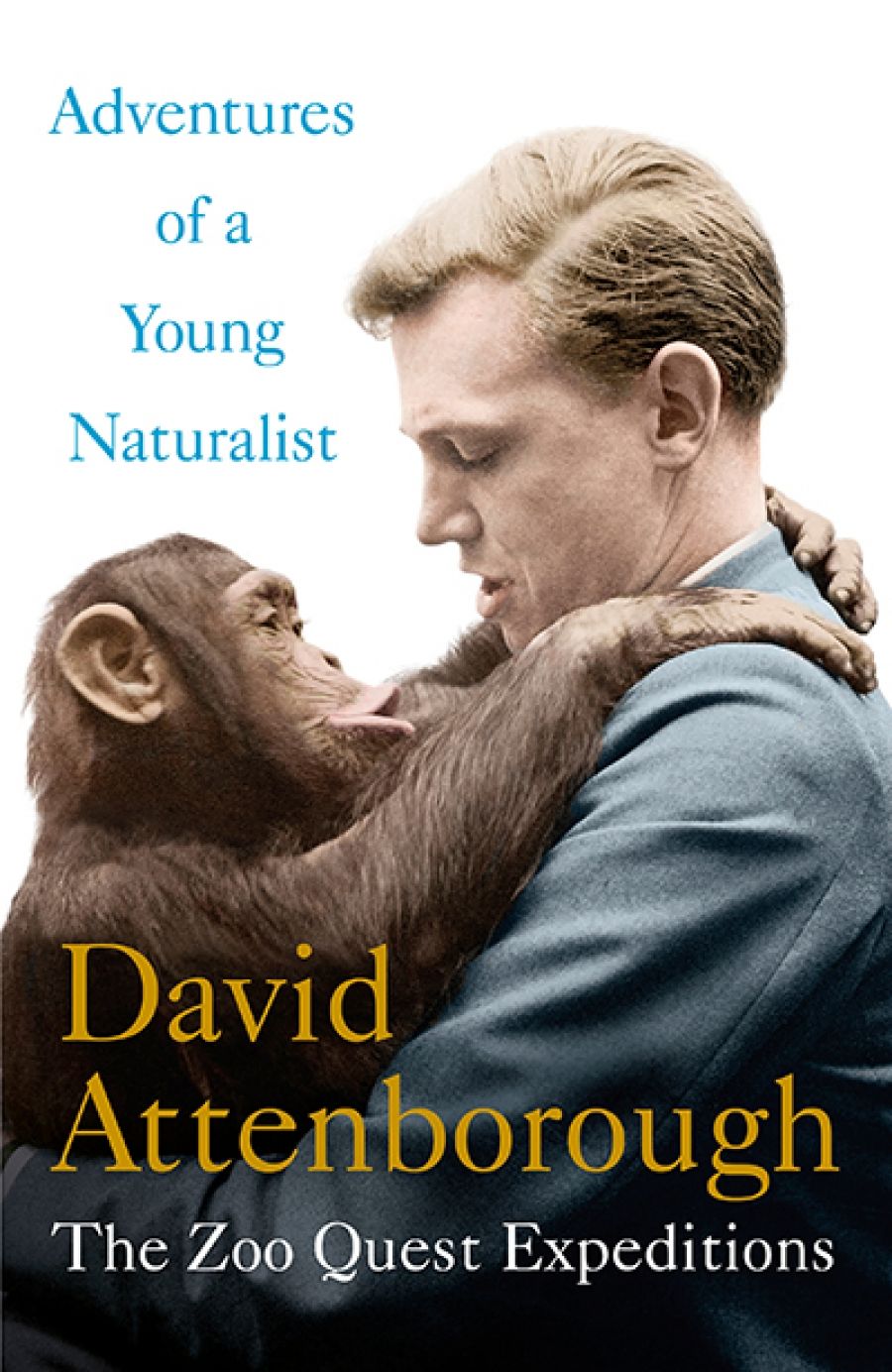
- Free Article: No
- Contents Category: Memoir
- Custom Article Title: Danielle Clode reviews 'Adventures of a Young Naturalist: The Zoo Quest expeditions' by David Attenborough
- Review Article: Yes
- Online Only: No
- Custom Highlight Text:
David Attenborough turned ninety last year. In a short animation celebrating his birthday, two Aardman penguins muse on their first meeting with the famous naturalist. ‘There’s something just about him,’ says the first penguin. ‘I don’t know why you wouldn’t love David Attenborough,’ declares the second. Indeed, it is hard to ...
- Book 1 Title: Adventures of a Young Naturalist:
- Book 1 Subtitle: The Zoo Quest expeditions
- Book 1 Biblio: Two Roads, $39.99 hb, 400 pp, 9781473664401
Adventures of a Young Naturalist belongs to a distinctive sub-genre of adventure, nature, and travel writing made popular by writers like Alfred Russel Wallace and Alexander von Humboldt. It sits alongside similar works by Gerald Durrell. The form proved so popular it even inspired Willard Price’s immensely popular fictional Adventure series.
The covers of the book feature a startlingly youthful Attenborough; mud-splattered beside a bogged jeep on the back cover and wrapped in the arms of an affectionate young chimp on the front. The pictures have the sepia-tinted quality of 1950s studio portraits firmly positioning them in their time. The black and white sequences of the original Zoo Quest TV programs have a similarly dated feel. Attenborough refused to use the unwieldy 35mm film cameras in the field, arguing for handheld 16mm film, which was regarded as amateurish and poor quality. The BBC finally compromised that Attenborough could film on the smaller film, but should do so in colour to improve the quality and tone of the monochrome end product. It seems that even Attenborough had forgotten this feature. Recently, the original colour negatives were found in the BBC archives and the footage was rescreened in surprisingly crisp colourful detail.
Technology, it seems, has always dictated the way nature is depicted for us. Today, wildlife documentaries seem to be constructed around breathtaking panoramic shots, zooming in on a lone narrator standing on the top of an isolated snow-clad mountain peak with no visible means of support. In the 1950s, when Attenborough finally got his hand-held camera to the jungles of South America, he realised they were too dark to film the animals. This gave rise to the format of live-action capture shorts, followed by studio presentations of the animals with the zookeeper. Ultimately, this format put Attenborough in front, rather than behind the camera, when his curator partner fell ill. The rest, as they say, is history.
 David Attenborough (Flickr)This book reminds us not just how much has changed since the early days of nature conservation, but how much Attenborough himself has changed – obviously with age, but also in tone and style. His younger self lacks his trademark melodious rhythm, which is so characteristic of both his narration and his books today. This book is written in the earlier, less sophisticated voice we hear on the Zoo Quest programs and lacks some of the polish and panache of the older narrator (such as in A Life on Air). In comparison with contemporaneous works, like Gerald Durrell’s A Zoo in My Luggage (1960), Attenborough is less inclined to exploit his subject matter (both human and animal) for comedic effect. Cultural misunderstanding and confusion raise the same anxieties and complexities that visitors to less-travelled places will recognise. Attenborough’s descriptions of politely consuming calabashes of vomit-scented cassiri or attempting to constrain an irrepressible peccary are similarly amusing, but conveyed without the same comic timing. Attenborough describes both his own and other’s behaviour with a bracingly impartial eye. If this edition has been sanitised for modern tastes, the changes are not evident on first reading.
David Attenborough (Flickr)This book reminds us not just how much has changed since the early days of nature conservation, but how much Attenborough himself has changed – obviously with age, but also in tone and style. His younger self lacks his trademark melodious rhythm, which is so characteristic of both his narration and his books today. This book is written in the earlier, less sophisticated voice we hear on the Zoo Quest programs and lacks some of the polish and panache of the older narrator (such as in A Life on Air). In comparison with contemporaneous works, like Gerald Durrell’s A Zoo in My Luggage (1960), Attenborough is less inclined to exploit his subject matter (both human and animal) for comedic effect. Cultural misunderstanding and confusion raise the same anxieties and complexities that visitors to less-travelled places will recognise. Attenborough’s descriptions of politely consuming calabashes of vomit-scented cassiri or attempting to constrain an irrepressible peccary are similarly amusing, but conveyed without the same comic timing. Attenborough describes both his own and other’s behaviour with a bracingly impartial eye. If this edition has been sanitised for modern tastes, the changes are not evident on first reading.
The republication of these accounts makes a worthy addition to the great naturalist expeditions of the past, such as Wallace’s journeys to South America and Southeast Asia. This book may not match the descriptive charm of Wallace, the humour of Durrell, or even the evocative lyricism of Attenborough’s own later work, but there is still much to love here. In these early works, we see a young naturalist in the making, and join him on the journey that helped create one of the most respected and admired nature writers and broadcasters of the modern age.


Comments powered by CComment